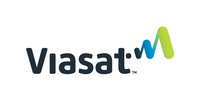Ericsson is hoping to smooth massive Internet of Things deployments with a new set of network design services and software features.
The company on Tuesday announced a new set of network services specifically for IoT applications, including IoT network design and optimization, deployment, and operation and management. Those come as a complement to Ericsson’s existing IoT software, Accelerator and Support Services offerings. The network services are being offered specifically for LTE-M and NB-IoT technologies, the company added.
On the design and optimization front, Ericsson said it will offer scenario assessments, network modelling, design development, and developmental appraisal. The company said the operation and management side of things will feature automated machine learning to help cut costs by identifying problems without human intervention.
Ericsson is also rolling out IoT software support for LTE-M features like voice-over-LTE (VoLTE), a move it said will open up opportunities in areas such as security alarm panels, remote first-aid kits, wearables, digital locks, and disposable security garments, among others.
“We anticipate IoT devices will surpass mobile phones as the largest category of connected devices as early as 2018 and, according to Ericsson’s latest Mobility Report, there will be 18 billion connected IoT devices in 2022. This massive uptake requires a different approach to network planning, design, operations, and capabilities than traditional mobile broadband networks,” Peter Laurin, Ericsson’s head of Business Area Managed Services, commented.
Ericsson’s announcement comes amid a flurry of activity around IoT, and not a moment too soon.
Verizon and AT&T earlier this year both launched nationwide LTE-M networks, with the latter pursuing plans to do the same in Mexico. Sprint also said it’s working on deploying LTE Cat-1 technology across its network this summer and is looking to LTE Cat-M roll outs in the middle of next year.
On the chip side of things, Qualcomm last month debuted SnapdragonWear 1200, a new IoT platform aimed at expanding LTE narrowband compatibility in wearable devices to enable features like VoLTE.
But Ericsson will be going up against equipment rival Nokia, which has been pushing hard on the IoT front. Nokia in February unveiled its Worldwide IoT Network Grid to offer a “one-stop shop” service model that includes provisioning, operations, security, billing, and dedicated enterprise customer services. Back in January, Nokia also launched a new set of applications for its Intelligent Management Platform for All Connected Things offering, including analytics capabilities powered by Nokia Bell Labs’ machine learning algorithms and new connectivity options including licensed NB-IoT and unlicensed LoRa. More on that here.
Filed Under: IoT • IIoT • Internet of things • Industry 4.0, Infrastructure




